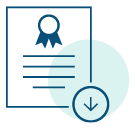Continuing Professional Development (CPD) information for mental health professionals
Participants who complete this program will receive a CPD Certificate and accrue CPD hours/OPD points. Some professions that are eligible for CPD include (refer to your Association or Credentialing body’s CPD requirements for eligibility details):

